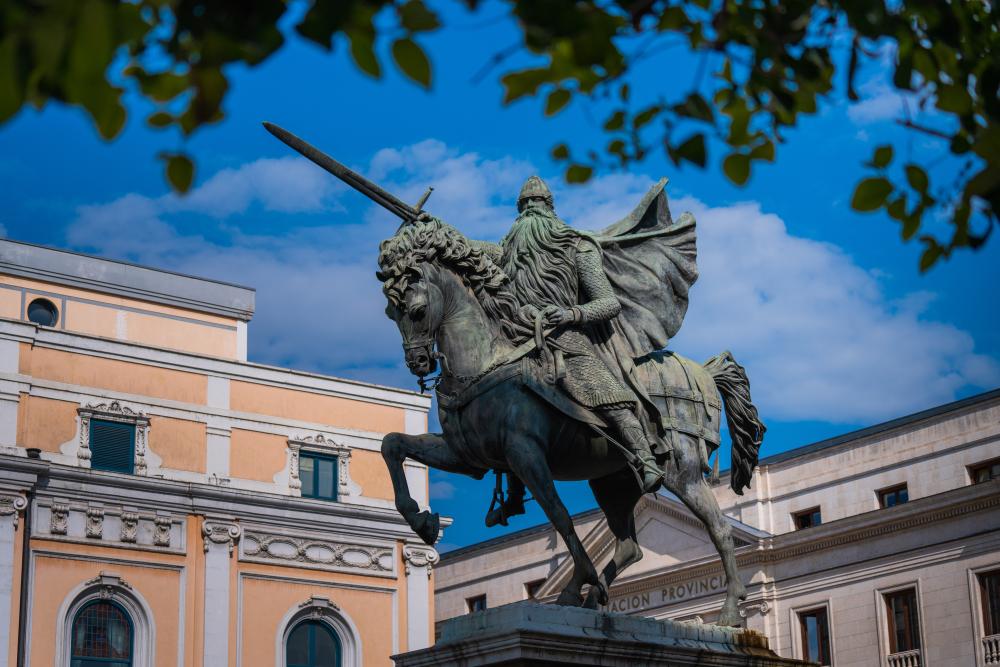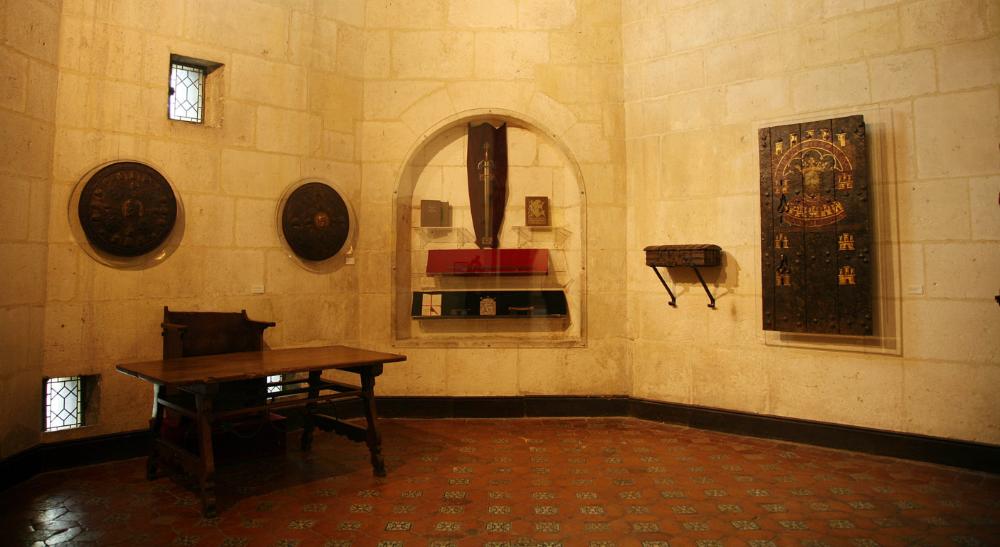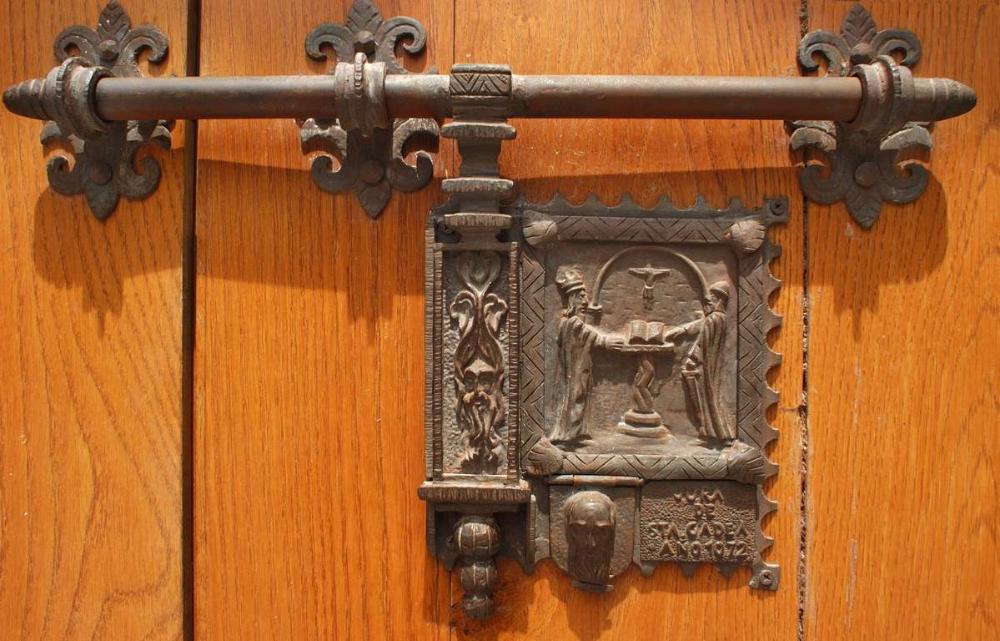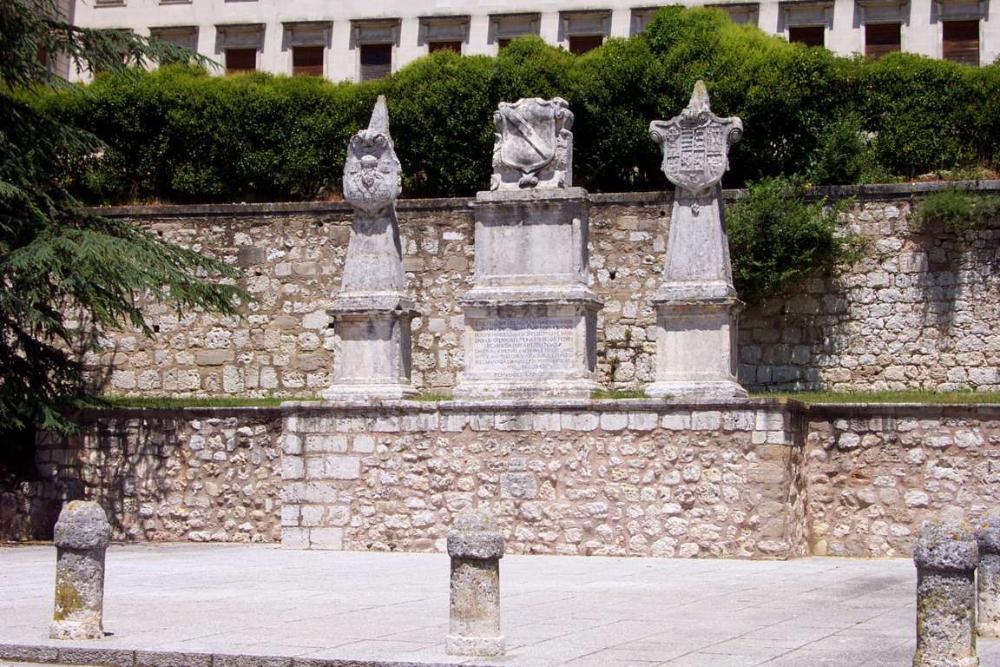The city and its surroundings are full of memories of El Cid. The route we propose will help recognise the main events and preserved places that have a direct connection with the figure of El Cid.
1-SITE OF EL CID
The site of El Cid is a landmark that commemorates the place where, according to tradition, the majestic house of El Cid once stood. The work dates back to 1784 and was built by José Cortés, replacing an ancient 11th century commemorative monument honouring El Cid. In the middle of this work we can admire commemorative inscription with El Cid’s coat of arms, escorted by the emblem of Burgos on the left side and the emblem of Cardeña on the right side.
Currently, it is on its third archaeological excavation campaign.
2- CHURCH OF SANTA GADEA
It is one of those iconic spots in the city with a direct link to the figure of El Cid. According to tradition, the oath of Santa Gadea took place here, by which El Cid forced Alfonso VI “The Brave”, who was the king of León, to swear that he didn’t play any role whatsoever in the murder his brother Sancho II of Castile “The Strong”. It is also said that this oath was made over a sacred bolt in 1072, which is represented in one of the stained-glass windows on the inside of the church.
The church is located in the street with the same name, in the heart of the city, just a few steps away from the cathedral.
3-BURGOS CATHEDRAL
The Cathedral houses the tomb of El Cid and his wife, Doña Jimena. Their remains have rested in the Cathedral since 1921. Before that, they were located in the Monastery of San Pedro de Cardeña and, afterwards, during the Napoleonic occupation, in the Paseo del Espolón. Later, in 1842, they were moved to the chapel in the City Hall, until their final and current location.
4-GATE OF SANTA MARÍA
This impressive medieval gate, which was originally built in the 17th century and has been declared an Asset of Cultural Interest, is one of the most representative monuments of the city and its beauty is comparable to the cathedral itself, located just behind the gate. It maintains a close connection with the figure of El Cid. As well as being said that El Cid left the city of Burgos using this gate when he was exiled, El Cid himself is represented in the right upper corner of the second module of the gate, and the gate houses one of his bones and a reproduction of his sword.
5-GLERA DEL ARLANZÓN
On the banks of the Arlanzón river, next to the Gate of Santa María, in the “Glera del Arlanzón” El Cid and his followers camped the first night after his exile, as told in the poem, El Cantar del Mio Cid. In his memory, there is a monolith located here with the verses of this passage carved into the stone. In addition, the legendary incident of El Cid’s chest took place here, in which the clever knight managed to trick a couple of bankers using an ingenious trick.
6- BURGOS MUSEUM
This museum was created during the 19th century with the aim of protecting and classifying the valuable works of art from the province after the expropriation of 1835. Its fine collections help us to discover the history and art of Burgos, with pieces that range from the Palaeolithic age to the 20th century. They are located in three 16th century, Renaissance style palaces: Casa de Miranda, Casa de Íñigo Angulo and Casa de Melgosa.
Its valuable pieces include, to name a few, the Roman pieces from the archaeological site of Clunia, and Tizona, a sword attributed to El Cid.
7. BRIDGE OF SAN PABLO
For centuries, the bridge of San Pablo connected the old town with its expansion towards the south side of the Arlanzón river, where there were lots of religious centres. During the 20th century, the bridge became an evocative tribute to El Cid, with eight monumental statues of characters related to the figure of El Cid, whose impressive equestrian statue dominates the space situated before to the bridge.
8- PLAZA DEL MIO CID
Plaza del Mio Cid, previously named Plaza del San Pablo, leads to the bridge with the same name, and is home to one of the twelve main entrance gates to the city. Its current appearance is due to the significant renovations it experienced from the late 18th century, being the starting point of Paseo del Espolón and where were the monumental Provincial Palace and the Teatro Principal were built. It was also one of the most important crossing points used by stagecoaches for a long time, and it gains its characteristic features from when the equestrian statue of El Cid, designed by Juan Cristobal, was erected in 1955.
9-MONASTERY OF SAN PEDRO DE CARDEÑA
Located 10 kilometres outside the city is the Cistercian monastery of San Pedro de Cardeña which, for many years, was home to the sepulchre of El Cid and his wife Doña Jimena. This is where the sarcophagus from the 12th century, sculpted by order of king Alfonso X the Wise can still be found. In the area in front of the main facade of the building, where there is an equestrian statue of El Cid, and a monolith with an inscription referencing his faithful horse, Babieca. This is where, according to tradition, it is thought that the animal is buried.
For more information about the ‘Camino del Cid’ (the route of El Cid): https://www.caminodelcid.org/






